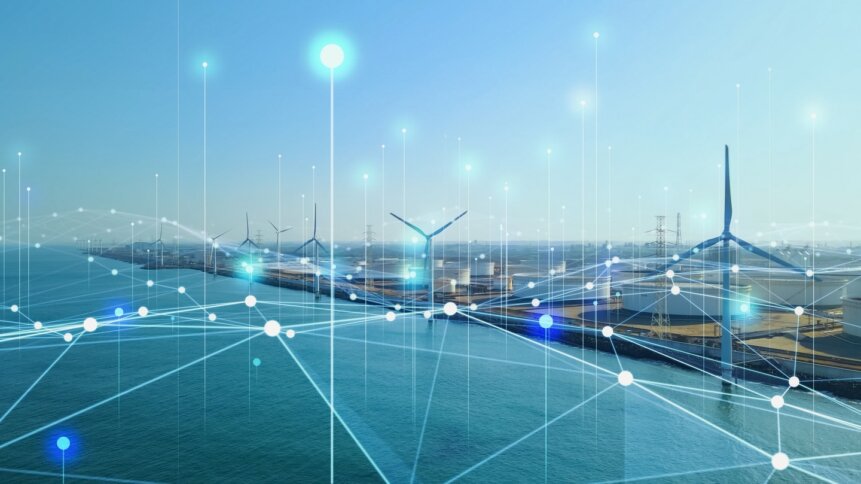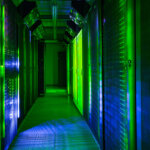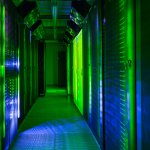Greener data centers and the patchy power map problem

The need for data centers to go green and use both less energy and less resources to deliver their services is becoming increasingly non-negotiable. The need for more data centers to deliver services in the increasingly cloud-based, data-driven business world… also non-negotiable.
In Part 1 of this article, we spoke to Chris Noble, CEO and co-founder of Cirrus Nexus, a cloud management platform which recently conducted a snapshot analysis of power grid regions in the U.S. and Europe to find which regions were best – and worst – in terms of their carbon emissions by way of finding out the true state of data center ecology.
He painted a picture of available technology that would put exceptional cost burdens on owners and operators of data centers, and of a certain political drag factor of “Not In My Back Yard” syndrome, which was arguably holding the data center world back from being as green as it needs to be.
But he also illustrated a power demand map that’s more complicated than you might at first suspect, with some areas able to make use of spare green capacity during the sleeping hours of areas that generate that power, and seasonal cycles that can also see data center energy consumption go from green in good months to extremely carbon-heavy in bad months.
While we had Chris in the chair, we asked him whether this pattern was universal or strictly localized.
THQ:
The shifting energy map – is that repeated often enough to be considered a feature of the system, or is it just an anomaly in the likes of California?
The ebb and flow of emissions.
CN:
Yes and no. It’s a thing we see repeated in plenty of cases – like in Ireland, which fluctuates from being pretty green with wind and hydro power to being fairly carbon-intense depending on the season. When the wind picks up, all of a sudden, Ireland goes from producing excess power with fossil fuels to exporting greener energy to the Netherlands.
But that, I think, speaks to your question – can you build on that? No, because it’s neither constant nor dependable. It may well be cyclical, but it’s not dependable. That’s why, for instance, energy storage solutions are crucial to the whole system.
THQ:
So are there particular regions that are doing especially well on their carbon emissions? And if so, are the things they’re doing remotely transferable, or are we looking at a system that has to be defined on an individual-area basis?
CN:
Yeah, better is relative, and it really varies. For instance, in the windy season, Ireland is better than other areas of the UK. At other times, it’s less great because it has to draw on more fossil fuels to get the same effect. Regions go from being clean and green to being carbon-intense – and back again. So for the most part, the “betterness” is circumstantial.
The expensive part.
But yes, there are regions that are better summer and winter, like Paris, France, and Sweden, and parts of the UK, because those areas tend to rely on nuclear and hydro, which in the 21st century are pretty clean fuel sources – and therefore allow for pretty clean data sources.
Where that gets complicated is that clean equals expensive. Cleaner data centers like those in Paris and Sweden are more expensive, because the power source is more expensive.
THQ:
Ah. It does keep coming back to that, doesn’t it?
So are there are a set of best practices that some regions are using and that the rest of the regions could or should be using, or is the whole thing more nebulous than that?
CN:
Oh, it’s pretty clear that some regions are making more progress than others. California has made a lot of progress with solar and wind. Texas has a lot of wind – in fact, I think they’re the biggest producer of wind.
THQ:
That sound you hear is us very distinctly not making a Mel Brooks gag about beans.
CN:
But again, you can only build so much wind power generation and stay economically viable. So when the wind blows, yes, you get clean energy, but there’s no way to store it with the access right where they are. Or rather, there is a way, they just don’t do it. And then it’s limited. So the only other way they do that is to spin up a lot of fossil fuels and gas. Our report is pretty clear which regions are steadily more carbon-intensive – and they are that way because they rely on coal and gas and oil.
The where and the when of complex workloads.
Part of the problem that we have in the States right now is that no new nuclear reactors have come online in a very long time.
In the EU, even with its current political issues, even Germany has said, “Okay, we’re not going to disable the rest of our nuclear reactors just yet.” But geopolitics obviously has a lot to do with power and power sources.
It’s good that we’re using technology, and that we’re doing so much with it. But now, it’s really a matter of how we do that responsibly. How we make sure that when we’re operating these really super-intense, massive workloads and datasets, we’re conscious of when we run them and where we run them. Because those two factors are really critical to making sure that we’re doing the right thing as far as the environment goes.
In Part 3 of this article, we’ll take a look at how to maximize green energy efficiency when running particularly heavy or complex workloads.










